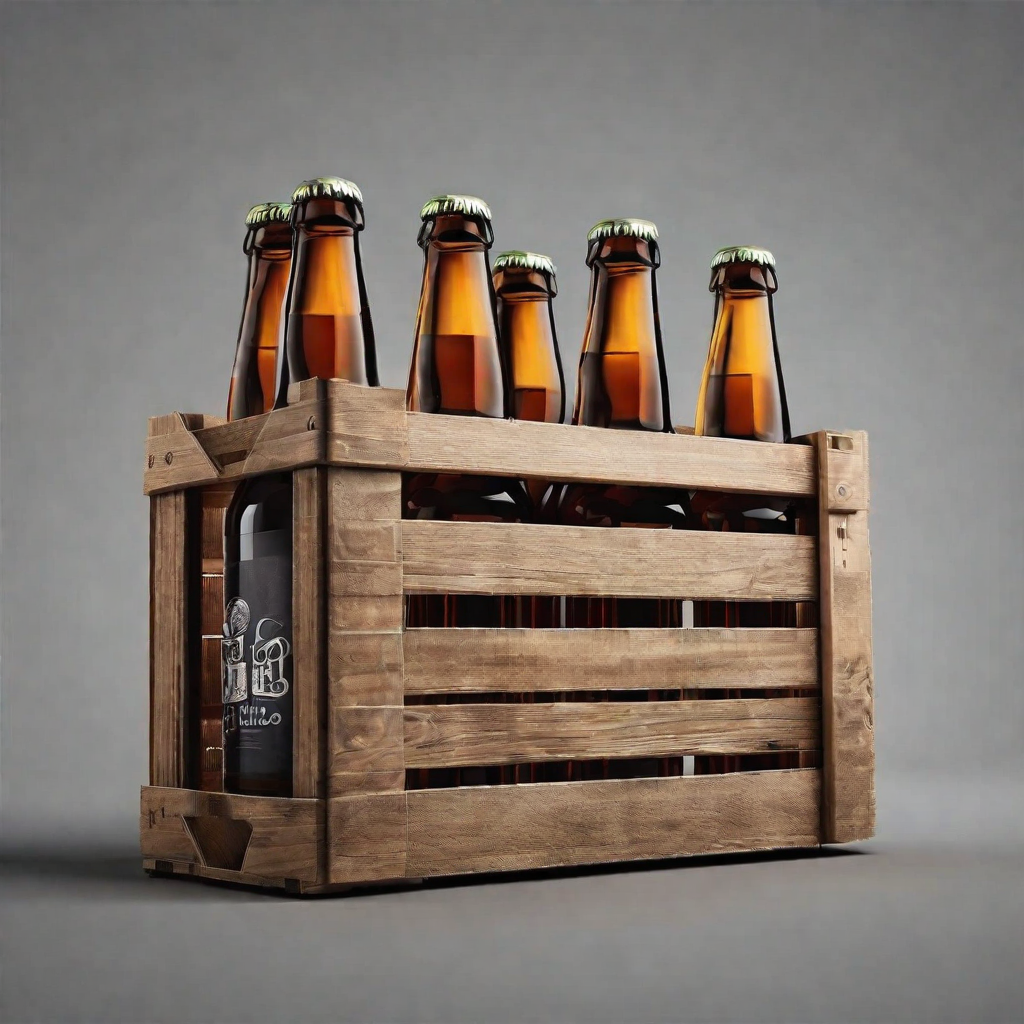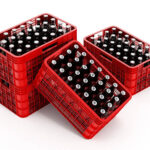Ahhh, the age-old debate: just how many beers in a case? Whether you’re stocking up for an upcoming party or settling in for a night of detox as part of your 2021 New Year goals, one thing’s certain – this isn’t a question we can answer with any simple yes or no. The exact number varies depending on which type of beer and size you purchase; even different states have different regulations on what they consider to be standard packaging. In this blog post, we will delve into the specifics and uncover the true answer – hopefully leaving behind some wise words that you’ll remember once it comes time to make your next beer run.
Standard Beer Case Contents

The standard case size for most mass-market beer in the US is 24 bottles or cans. This configuration emerged over many decades as an optimal case size for transport, storage, and consumption purposes. 24 packs stack neatly on pallets and in refrigerators. The volume also suits most gatherings and parties. For consumers, 24-packs are cost-effective, with beers priced cheaper per bottle/can in larger cases. Bulk packaging also reduces waste compared to single-serve options. So if you’re looking for an affordable way to stock up on beer, you can’t go wrong with a standard 24-pack case.
Non-Standard Beer Case Sizes
While 24-packs may be the norm, plenty of exceptions exist:
- 12-pack – A popular option for smaller households or casual gatherings. More portable than 24-packs.
- 18-pack – Typically contains cans, an in-between option between 12 and 24 packs.
- 30-pack – Mostly 30-can packs, perfect for larger events and parties.
- 6-pack – Typically bottles, convenient for sampling new styles.
- Loose Single Bottles – No case, sold individually. Offers ultimate variety and flexibility.
The package type – bottles vs. cans – also impacts case size configurations. Bottle dimensions limit viable case sizes more than cylindrical cans. You’ll see more canned 18/30-packs than bottled ones for this reason.
Brand and Brewery Variations
Brewery types and individual brand approaches also influence beer case sizes:
- Craft breweries tend to offer more variety – 4/6/12-packs for flagship beers, seasonals in 6/12-packs.
- Macro breweries like Anheuser-Busch chiefly sell 12/18/24/30-packs of flagship lagers like Bud Light.
- Import brands like Heineken provide 12/18/24-pack cases to match domestic brands.
Then there are unique offerings like Corona’s 8-pack or Guinness’ 14-pack that add even more diversity. Brands experiment with sizes to stand out in stores and appeal to certain use occasions.
Regional Variations in Beer Case Sizes
Case sizes vary further once you look beyond the US:
- UK/Ireland – Cases of 4, 8, 10, 12, 18, 20, 24 are common. Brand names like Carling sell carboard 8/12-packs.
- Canada – Mostly 6, 12, 24-packs like the US, with a few odd varieties like 15-packs.
- Australia – One uniqueness is 30-can “slab” cases to service a strong drinking culture.
- Japan – Case sizes strictly follow tax regulations – 20 bottle cases and 10, 20, or 24 can cases only.
Cultural drinking habits and existing container size regulations greatly affect case size conventions internationally.
Packaging Material’s Influence on Case Size
See more : How Long Does Beer Last In A Keg? | Get The Answers Here
The type of packaging used also shapes allowable case configurations:
- Glass Bottles – Heavier weight limits potential case sizes more than cans. Most common options are 6 or 12-packs.
- Aluminum Cans – Extremely lightweight and stackable. Enable large 18/24/30-pack cases.
- Plastic Bottles – Increasingly used for budget beer brands. Durable enough for large 24/30-pack cases.
Material waste and recyclability are also considerations. As sustainability grows more important, packaging choices may continue evolving.
Seasonal and Limited Release Cases
Seasonality and exclusivity impact beer case availability:
- Seasonal varieties like summer saisons and winter lagers come in specially marked case packs.
- Limited editions and special releases have unique case designs and limited supply based on the batch size.
Finding these limited cases can be like a treasure hunt for dedicated beer fans seeking the newest offerings.
Evolution of Beer Case Sizes
Beer originally shipped in wooden barrels before bottling and canning transformed portability:
- 1900s – Early 6-packs emerged but consisted primarily of heavy, risky glass bottles.
- 1930s – Advances in brewing and bottling enabled the reliable mass production of 24-bottle cases.
- 1960s – Lightweight cans gained prominence, allowing new large 30-pack configurations.
- 1970s-present – Craft beer diversified the market with smaller cases like 12 and 6-packs.
Ongoing innovations in materials, distribution, and consumer needs will likely continue advancing case size options.
Recycling and Sustainability

Environmental issues make proper case disposal important:
- Most bottle and can materials are readily recyclable, but cases often use recyclable cardboard and/or plastic.
- Rinse containers to avoid contamination. Break down boxes and follow local recycling guidelines.
- Some breweries take back cases for reuse or recycling – check a brewery’s website for such initiatives.
Consumers and brewers must work together to diminish the lifecycle impacts of beer production.
Comparative Analysis
Beer Cases vs. Beer Kegs
While cases suit household use, kegs have benefits for large gatherings and events:
- Volume – Full-size kegs hold over 120 12oz servings. Equivalent to 5+ cases.
- Freshness – Kegs maintain beer quality longer once tapped compared to cases.
- Cost – More economical per ounce, but higher upfront cost for the keg and tapping equipment.
- Portability – Kegs can be heavy and cumbersome for individual handling compared to cases.
- Dispensing – Kegs require proper tapping equipment and glasses for pouring. Cases just need a bottle opener.
Beer Cases vs. Beer Balls
See more : What Temperature Does Beer Freeze | Beer Explode In Freezer
Beer balls are stackable plastic containers holding 5 gallons:
- Single-Serve – Cases allow for individual bottle/can use, while beer balls are for large-scale dispensing.
- Beer Stability – Beer may oxidize faster in balls once opened. Bottles and cans maintain carbonation and quality longer.
- Brand Variety – Cases provide diverse options. Balls require bulk purchases of a single beer style.
- Transport – Balls take up substantial space. Cases are more modular for easy handling.
The convenience factor of cases makes them preferable for personal use for most consumers.
Factors to Consider When Buying
Case prices depend on the brand, package type, and volume:
- Brand – Craft, specialty, and imports cost more per case than major domestics.
- Bottles vs. Cans – Bottles tend to be pricier due to higher material costs.
- Case Size – The cost per beer decreases significantly as case size increases.
To maximize value, buying domestic cans in larger case volumes is your best bet. Just be sure to match quantities to your actual consumption. Leaving beer sitting for months risks flavor degradation and is wasteful.
Beer Storage and Shelf Life
Proper storage helps maximize the shelf life of beer cases:
- Store cases in a cool, dark place around 55°F if possible.
- The fridge works for short-term storage, but takes up space and risks flavor loss by over-chilling.
- Pantries/cellars are suitable for larger case stockpiles, depending on climate conditions.
- Garages/outdoors are not recommended due to temperature fluctuations.
Following these guidelines, unopened beer cases should last:
- Non-craft beer – 2-5 months generally
- Craft beer – 2-6 weeks for hoppy styles like IPAs
- High ABV styles – 6-12+ months
So size your stash based on consumption rate, and avoid purchasing more than you’ll drink in peak condition.
Conclusion: How Many Beers In A Case
Beer cases come in many configurations based on brewing traditions, packaging innovations, regulations, and environmental considerations. While 24-packs represent the standard, a range of case sizes exist – from single bottles to massive 30-can packs. Understanding the case options for different brands allows you to tailor purchases to your specific tastes and occasions. Cases let you economically stock up on your go-to brews. Just be sure to moderate your purchases based on realistic consumption, storing cases properly to maintain optimal beer flavor.

Ronald B Gamrot is the owner of Silverking Brewery, one of the most successful craft breweries in North America. He started the business from scratch in his garage, and it has since grown into a multimillion-dollar operation. Ronald is passionate about brewing delicious beer and providing top-notch customer service. He is a respected member of the brewing community and often speaks at industry events.








I assume by “case” they are referring to a 30 rack, but our group in brought in a 36-rack of Coors per person and it was fine.
A case of beer to the security guards is any amount of beer in a box. It doesn’t matter if it’s 12, 24, 30. My friend and I tried to bring a 30 pack of coors and then two 12 packs of Heineken and they said we had too many cases. Luckily the people next to is had room in their car so they let us throw it in there and pick it up once we got through security
We had 6 30 packs in our car of 5 people. Everything was buried at the bottom of the trunk and in our cooler. They didn’t even notice. I wouldn’t worry too much about it.
This is great to hear!
Thanks, this is what I was worried about. My friend and I have a 24 pack, a 12 pack, and a 4 pack. I’d like to bring the 4 pack since it’s strong quality beer, unlike the other two. It doesn’t seem excessive to me, but you can never tell.
Thank you for your comment.